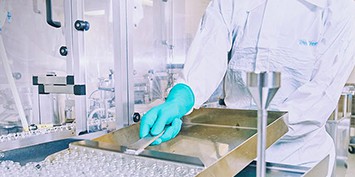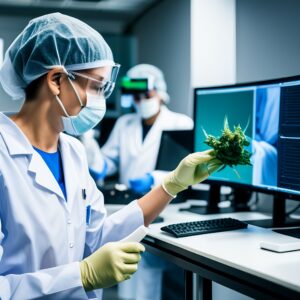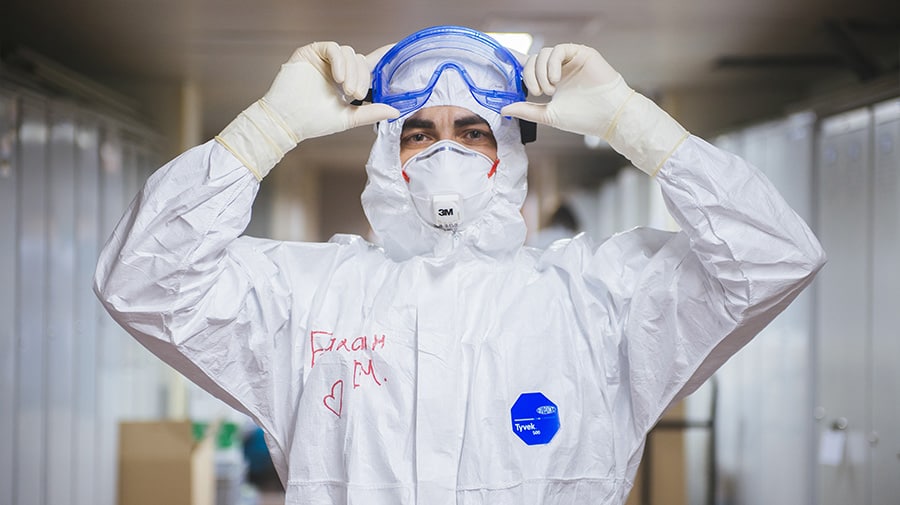Why are so many industries incorporating cleanrooms into their manufacturing process?
As the production processes become more innovative and advanced, so does the need for a controlled environment in which safety, accuracy, and product quality can be carefully monitored and the risk for malfunction or an adverse reaction is reduced. A variety of industries, including aerospace, pharmaceutical, biotechnology, and electronics follow precise operations in which a single unwanted pollutant such as dust, or an alteration in temperature can have devastating effects on the production and often result in negative cost implications as well as possible restart of the entire production process.
Typically associated with university research and science laboratories, cleanrooms have been historically used to mitigate the risks of environmental impacts on research and production processes. In recent years, as research, experimentation, and complex production have become a part of a larger number of industries, cleanrooms have been adopted more frequently to increase quality control and safety.
What Is a Cleanroom?
A cleanroom is an enclosed area where provisions are made to control, monitor, and maintain a desired internal environment. Cleanrooms are typically used to reduce the contamination of pollutants such as dust, microbes, vapors, and even skin particles. Cleanrooms are also capable of controlling factors such as temperature, pressure, humidity, and airflow. How exactly do cleanrooms work, and how can all of those factors be maintained?
The primary goal of a cleanroom is to remove pollutants and contaminants from the air. The outside air is filtered through a filter system such as HEPA before being allowed to flow into the room. The air inside of the cleanroom is continuously being filtered to prevent any contamination from happening within the enclosed space.
Air filtration is only one of the ways in which a cleanroom is created and maintained. The most common cause of cleanroom contamination happens to be the staff that works within the said space. Fortunately, some measures can be taken to prevent contamination.
Personnel must wear appropriate cleanroom attire, including masks, gloves, and coveralls. The required attire will vary depending on the industry. Once inside the cleanroom, there are measures that must be taken to maintain the controlled environment of the enclosed space. Cleanrooms are typically equipped with special furniture that limits the particles and dust collection. The equipment is cleansed with sanitary wiping products and disinfectants, and all garments are disposed of after each use. To maintain the efficacy of the cleanroom, it is important to invest in durable and high-quality cleanroom equipment.
Why Use a Cleanroom?
A cleanroom can be used for a variety of reasons depending on the industry it is used in. In the electronics industry, temperature and humidity can have damaging effects on the quality of the product and result in critical errors in their production. While in the biotechnology field, where sensitive fluids and organic matter are observed and experimented with, even slight contamination can result in inaccurate test results. An industry such as pharmaceuticals, where organic matter and fluids are manipulated to develop chemicals that influence it, highly relies on cleanrooms to create effective drugs and medical treatments.
Cleanrooms are an integral part of the production process in a variety of industries in which product quality can be easily diminished by outside factors such as temperature, pollutants, and air pressure. To reduce the risks of manufacturing errors and undesirable cost increases, investing in a high-quality cleanroom is key.
Quality – Cleanrooms are essential to help meet various industry-specific quality control guidelines. This includes everything from usp<797>, usp<800>, 503A and 503B Compounding Pharmacies, ASTM, FDA, FOD, and other guidelines or quality control recommendations.
Environment and Safety – A cleanroom not only helps to protect the environment from contamination, it can also protect the personnel from physical harm. In additional to air quality, quality personal protection equipment (PPE) is key to protecting the worker as well as the controlled environment.
Product Consistency – A controlled environment can not only influence product quality but can also impact product consistency. For example, in the aerospace manufacturing industry it is essential to control FOD. In the microelectronics industry, particles are controlled at the molecular level to ensure product consistency is met. The same is true for pharmaceutical and drug manufacturing.











